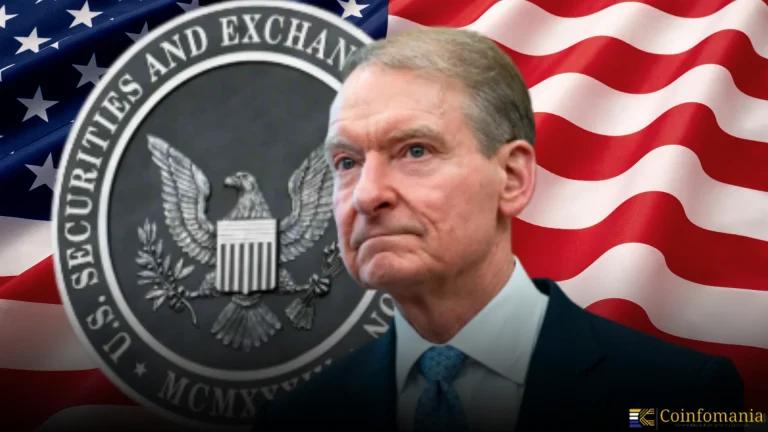The Lasting Impact of 1923 on Germany’s Fiscal Discipline and ECB Policies
What if one event in 1923 still controls Europe's economic mindset? Discover the long shadow of hyperinflation on fiscal behavior.

Quick Take
Summary is AI generated, newsroom reviewed.
Germany’s hyperinflation in 1923 left deep scars that still shape national and European fiscal thinking.
The European Central Bank’s focus on stability is rooted in cultural and historical memory, not just economic theory.
This legacy indirectly influences global conversations, including debates on monetary control and decentralized alternatives.
On June 20, we’re reminded that Germany’s economy—often praised today for its restraint, prudence, and long-term stability—didn’t arrive at this mindset by chance. At the heart of its fiscally conservative approach lies a deep national memory of 1923, a year marked by one of the most extreme inflationary episodes in world history. The scars of that period run deep, shaping Germany’s modern economic philosophy and its cautious approach to monetary policy.
Within mere months, the German mark evaporated. Prices doubled by the day. People carried enough cash in wheelbarrows to buy one loaf of bread. It was more than an economic catastrophe, it was a national trauma. And while nearly a century has past, this trauma is somewhat an anchor point for Germany’s decisions on policy, especially concerning monetary and fiscal affairs. For those wishing to understand the often careful posture of the European Central Bank or Germany’s insistence on a low deficit rationale, looking back to 1923 is meaningful context.
Why 1923 Changed Everything for Germany
In 1923, Germany experienced hyperinflation as a result of war reparations, rampant money printing and crumbling trust in the establishment. What unfolded was more than the demise of a currency; it was the disintegration of order, savings and identity for millions of Germans. Wages could be worthless overnight. Middle class wealth simply disappeared. Such a failure of economic function did not merely breed hardship for people, it deeply eroded faith in the state.
This individual experience of catastrophe and loss, bred a normalisation of financial conservatism in German culture. To this day German voters, economists and policymakers seldom fail to support categorical inflation targets, balanced budgets and monetary conservatism. These behaviours have been passed down generations and influence the German
From National Memory to Central Bank Strategy
The European Central Bank, though multinational, is still heavily influenced by Germany’s fiscal legacy. ECB policies have often leaned toward inflation control, even at the expense of aggressive economic stimulus. While countries like the US may tolerate moderate inflation in pursuit of growth, European strategy remains focused on price stability above all.
This mindset is not purely economic, it’s historical and cultural. The memory of 1923 is so deeply embedded that it shapes risk perception across institutions. Germany’s hyperinflation has become a touchstone in central bank strategy, guiding choices on interest rates, bond-buying and money supply.
When the Past Shapes the Present: Fiscal Caution as a National Identity
Modern Germany’s economic approach, from its aversion to debt to its resistance toward excessive stimulus, is often misunderstood. But when viewed through the lens of its past, these policies make sense. Fiscal caution is not simply a choice, it’s a protective reflex, hardwired through historical experience.
Germany’s unwillingness to go along with expansive spending in the wake of recent crises (the European debt crisis or the pandemic) was, at least, in part, informed by a desire to avoid the past. The idea is clear: inflation is not just an economic phenomenon, it is a social danger with the potential to undermine civil order.
Indirect Ripple Effects: Why This Legacy Still Matters Globally
Interestingly, this collective memory also informs global debates, including the rise of alternative financial systems like cryptocurrency. While the article doesn’t force a comparison, the fear of fiat failure, which Germany lived through, is often cited in discussions around decentralized currencies. Bitcoin’s fixed supply model is often contrasted with central bank policies that increase money supply. For many crypto advocates, Germany’s hyperinflation is not just history, it’s a warning.
This global echo of past trauma shows how financial history is not just for textbooks, it actively shapes our trust, innovation and resistance to monetary risk. And while Germany may not embrace crypto readily, the philosophical parallels are striking.
A Memory That Still Governs Policy
Germany’s hyperinflation occurred over 100 years ago but it can still invoke greatness when it comes to today’s economic policy history. It remains pertinent not only at the national level, but for Europe and global dialogue surrounding monetary security. As the world continues to investigate new financial measures, while central banks evaluate stimulus versus price inflation, Germany’s past can only continue to echo through the ages. The question remains not so much if we remember, but if we’ve learned.
Follow us on Google News
Get the latest crypto insights and updates.
Related Posts

XRP Technical Structure Signals Potential Bullish Expansion Over the Next Six Months
Triparna Baishnab
Author

SEC Releases Crypto Wallet Custody Guide as Investor Education Push Intensifies
Triparna Baishnab
Author

Pi Network Smart Contracts Go Live as Testnet2 Reaches Full System Integration
Triparna Baishnab
Author